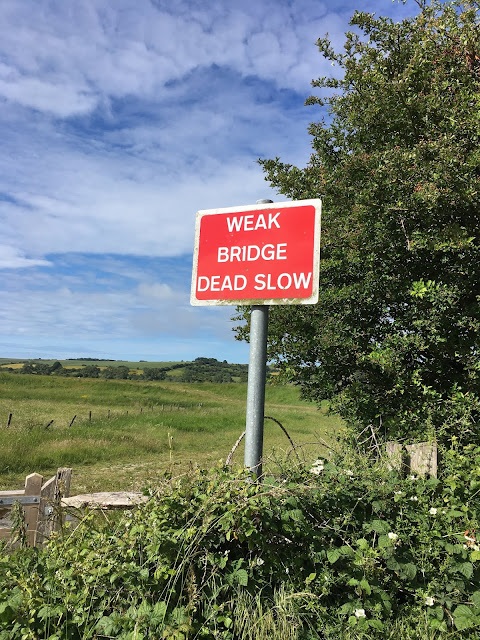When we arrived, I finally realized just how remote this particular spot was (at least, without a car). The train station was a concrete platform by the track, and we climbed down to a dirt path, opened a gate by hand, and walked over the tracks to a road leading to our destination. I realize as I type this that I'm not painting the best picture, so let me clarify: it was pristine.
We made our way towards the village where Woolf's house is, but we saw this church and decided to stop for a moment.
We realized we had a lot of time to explore, and we also realized we were not too far from the sea. I did a little search on Google Maps, and we decided to walk to the sea, have lunch, walk back to Woolf's house, and then catch our train home.
The walk was nothing but freakin' glorious:
There were so many sheep!
After passing through some iffy fields, we made it to the cliffs overlooking the sea.
I mean. Look.
We climbed down to the shore, which was protected by a concrete wall. The shore is rocky; I could get used to hearing the sound of rocks rushing over each other in the surf.
We reluctantly climbed away from the waves, and discovered that we were in a place called Peace Haven, which happens to be right on the Prime Meridian. So we put our shadows and our feet on it.
All the villages are so small and so close together, so we passed from Peace Haven to Telscombe Cliffs to find lunch.
We made our back to the village with Woolf's house, and finally made it to her property with nearly bursting bladders and clouds that felt the same.
Woolf's back yard is a dream. I want a country house with a garden in southern England now, please and thank you.
Woolf had a tiny building where she could focus and write. Her writing hut is glassed in, so please forgive the reflections. It looks like a damn good place to write, if you ask me.
A sculpure of Woolf marks where her ashes lie in the garden.
A bust of Woolf's husband also marks his burial site. There's Rachael!
Woolf's house:
We finally went inside to avoid some man who wanted all the visitors to come listen to him read Woolf in the rain. The house was nice and empty. I can see why Woolf liked it so much here.
Leonard Woolf's desk:
A portrait of a young Woolf. I'd never seen it before, but I love it.
This is how printers could attach pages before there were staplers: a crimping machine.
Woolf's bedroom:
Woolf would cover her books herself. That's why they look so nice and uniform on the shelf. Also, that's one of her favorite scarves across the chair.
Woolf's sister painted scenes from their childhood trips to the sea on her fireplace.
The house made me so sad for Virginia Woolf, who drowned herself in the river (pictured near the beginning of the post) when she felt another anxiety attack coming on one day. I could see her walking the paths among the sheep, sitting and enjoying the view, and working away on some writing in her hut. In fact, Rachael found this little essay about one of the places we visited today:
Peacehaven: Would it much affect us, we ask ourselves, if a sea monster erected his horrid head off the coast of Sussex and licked up the entire population of Peacehaven and then sank to the bottom of the sea? Should we mourn them, or wish for their resurrection? No; for none of the qualities for which we love our kind and respect its misfortunes are here revealed; all for which we despise it and suspect it are here displayed. All that is cheap and greedy and meretricious, that is to say, has here come to the surface, and lies like a sore, expressed in gimcrack red houses and raw roads and meaningless decorations and ‘constant hot water’ and ‘inside sanitation’ and ‘superb views of the sea’. We did not know that we had so much evil in us. Here shown up against the background of nature we can weigh it to the last ounce. The road has been turned into a switchback; the cliff into a ‘park’ for motor-cars. Human beings bask inside them, dipping alternately into paper bags for peppermints and into newspapers for comic cuts, while the sea and the downs perform for them the same function that the band performs when they eat ices at Lyons’s. Compared with this, Wembley is beautiful, and the Mile End Road respectable, while, when we cut loose at last and turn into open country, we feel inclined to worship the first flock of sheep that we meet and venerate the simplest of shepherds.
Woolf, Virginia. Street Haunting and Other Essays (Vintage Classics) . Random House. Kindle Edition.





























































No comments:
Post a Comment